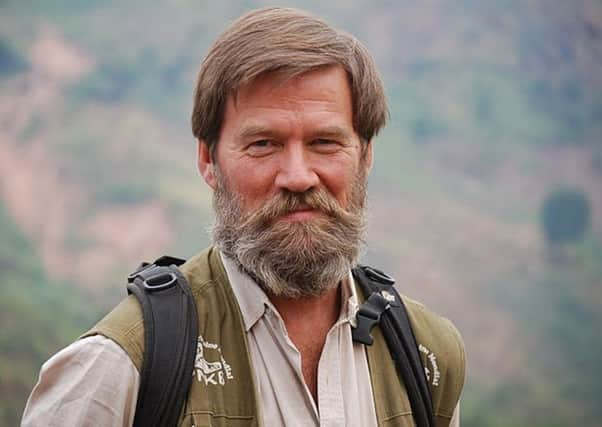Expert on gorillas comes out of mist for award


But tomorrow the spotlight will be on Ian Redmond for a change when the Yorkshire conservationist receives a national award in recognition of his tireless work to protect gorillas, elephants and other endangered wildlife.
The 59-year-old, who was born in Malaysia but grew up in Beverley, where his mother still lives, will be presented with a special award from the International Fund for Animal Welfare (IFAW) in an event at the House of Lords, hosted by Baroness Gale and presented by TV wildlife presenter Bill Oddie.
Advertisement
Hide AdAdvertisement
Hide AdMr Redmond said his fascination with the natural world began in his childhood in Malaysia and Yorkshire, when he would keep stick insects, praying mantids, and tadpoles.
He also joined the Beverley and Hull Naturalist Society.
Speaking of his award, he said: “Wildlife conservation sometimes feels like you are banging your head against a brick wall, with most of the world regarding it as largely irrelevant, so when someone taps you on the shoulder and says they think you are doing a good job, it is very encouraging.
“Saving wildlife and natural habitats is increasingly recognised as essential to maintaining a healthy planet for future generations.”
He has dedicated his life to observing and conserving endangered species and his research has taken him to remote corners of the world.
Advertisement
Hide AdAdvertisement
Hide Ad“In the mid-1970s, while studying biology and geology at university, he contacted Dian Fossey – the woman on whom Sigourney Weaver’s character was based in the 1988 film Gorillas in the Mist – and was invited to her remote rainforest camp in the mountains of Rwanda, where he worked for two-and-a-half years as her assistant studying gorillas.
It was this insight that years later allowed him to help the actress better understand Ms Fossey, and teach her to grunt like a gorilla.
The film was nominated for five Oscars, including best actress, but won none.
It did, however, pick up other awards, including two Golden Globes for best actress and best original score.
Advertisement
Hide AdAdvertisement
Hide AdMr Redmond’s focus shifted towards conservation in 1978 following the murder of young silverback, Digit, whose death reinforced the need for anti-poaching patrols to combat the trade in animal parts as souvenirs.
Just days later, Mr Redmond found himself introducing Sir David Attenborough and his BBC crew to gorillas for the famous Life on Earth programme, which brought their plight to a huge audience.
Working on projects in New Guinea, Mr Redmond discovered several new species of nematode worms and two new species of frog.
He then returned to Africa to conduct the first study into the cave elephants of Kenya’s Mount Elgon.
Advertisement
Hide AdAdvertisement
Hide AdOver several months, the team gained the trust of the elephants, in particular one nicknamed Charles, who was tragically later killed for his tusks.
This led Mr Redmond to set up the African Ele-fund, which along with other organisations formed the Elefriends campaign, which helped secure the international ban on ivory trading in 1989.
In 2001, Mr Redmond helped launch the UN Great Apes Survival Partnership, which brings together governments and other organisations in efforts to halt the alarming decline in ape numbers worldwide, including gorillas, chimpanzees, bonobos and orang-utans.
He encourages conservation groups to work together and is the founder and chairman of the Ape Alliance, a coalition of nearly 100 organisations working to improve the welfare and conservation of all apes.
Advertisement
Hide AdAdvertisement
Hide AdHe also founded and for 10 years was chairman of the UK Rhino Group.
Robbie Marsland, UK Director of IFAW, said: “Ian’s vital work over many years to conserve some of our most endangered species, and highlight their plight to the public, is truly inspiring.
“He is a very deserving winner of IFAW’s Conservation Award.”